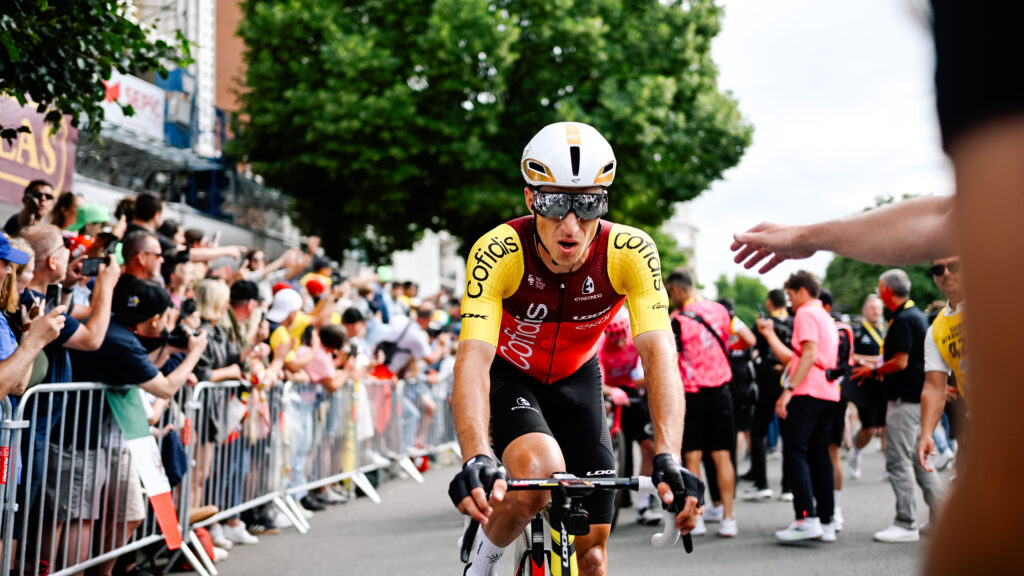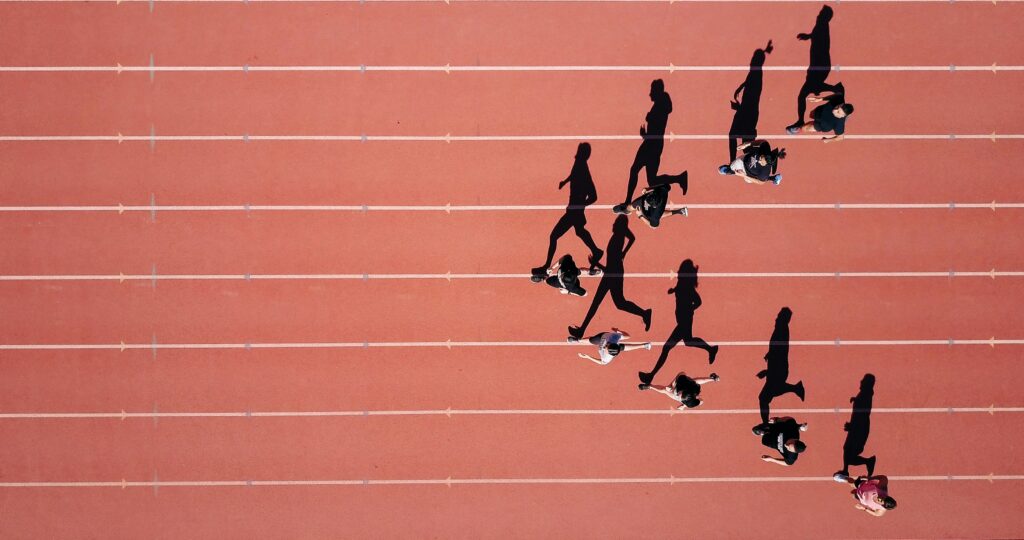Recovery, one of the pillars of high performance, is essential to the process of adaptation to the various stressors that an individual is subjected to—exercise, competition, practice, work stress, and so on.
It is crucial to implement methods in your daily routine to facilitate the recovery and restoration of the multiple systems in our body, mainly, the neurological, musculoskeletal, endocrine and immune systems.
Finding a balance between the stressors and recovery strategies is important to maintain a consistent and sustainable active lifestyle as well as to perform at the highest level in sport. Due to the complex and multifaceted nature of the recovery process, there is no magic pill or a single way to enhance it.

Highlights
- Common factors associated with recovery are overcoming muscle soreness, replenishment of the glycogen stores, managing fatigue and the role of inflammation,
- Sleep as a recovery strategy is important as proper sleep improves cognitive function and to accelerate the recovery process,
- Nutrition as a recovery strategy and induce allostatic challenges in the body.
Common factors associated with recovery
Some common factors associated with recovery are overcoming muscle soreness, replenishment of the glycogen stores, managing fatigue and the role of inflammation, to name a few. There have been numerous studies conducted on post-activity recovery modalities including massage, cryotherapy (cold therapy), stretching, hyperbaric (high-pressure) oxygen therapy, saunas, etc. However, for most of these modalities, the evidence in the literature is fairly inconclusive and largely dependent on the situation.
The two most significant and well-researched recovery strategies are concerning sleep and nutrition—as they have the highest impact on the autonomic processes of the body. In this blog, we will dive deeper into these two factors since they provide the highest return on investment when it comes to recovery and regeneration of the body, regardless of the intensity of the activity that precedes it.
1. Sleep
Sleep is an important component of human life, yet a majority of people do not understand the relationship between the process of sleeping and its effect on recovery. It has been shown that a minimum of seven hours of daily sleep seems to be necessary for proper cognitive function and to accelerate the recovery process.
When one sleeps, the brain reorganizes and recharges itself, removing metabolic byproducts which have accumulated throughout the day, especially after an intense bout of exercise and activity. Each phase of the sleep cycle restores and rejuvenates the body for optimal function.
2. NREM and REM sleep:
In an ideal situation, sleep is divided into two major phases. The first is referred to as the ‘non-rapid eye movement’ (NREM) phase and the second is the ‘rapid eye movement’ (REM) phase.
The sleep cycle first starts with the NREM period, most notably, the N3 phase, which is characterized by deep sleep and plays a major role in the recovery processes. It is then followed by the REM period, in which the brain is active, while the body is immobilized and relaxed.
During an eight-hour sleep the brain goes in and out of the REM period about four to five times—hence, an adequate amount of sleep is required to ensure rest and recovery. One can maximize their sleep quality through ‘sleep hygiene’ practices and maintaining a consistent sleep routine.
3. Nutrition as a recovery strategy
Driving recovery through food and supplementation is less straightforward as compared to sleep. However, we may use a framework to highlight the relationship between nutrition and exercise recovery. Before we dive in, however, we must first understand the phenomenon of allostasis.

4. Allostasis
Allostasis means “stability through change”. It refers to the body’s process of adaptation to acute stress and changes in the environment (namely, exercise, a sudden emotional event, etc.) in order to maintain homeostasis (a steady state of optimal function) by creating a response that promotes recovery from these stressors.
Here, we are going to look at the role of nutrition in response to allostatic challenges, such as exercise, to increase performance and enhance the restoration process.
This model proposes that efficient regulation of an individual’s allostasis requires the anticipation of needs and preparing to satisfy them before they arise, nutritional strategies to refuel energy sources (like muscle and liver glycogen), replacing fluid and electrolytes and the synthesis of new proteins to counteract exercise-induced damage and improve immune-system response.
The 4R’s framework
A general approach to be used in post-exercise recovery is the 4Rs framework, which comprises the following:
- Rehydration: This is a fundamental process that depends on the individual, the environment and the exercise/sport they participate in. This period can last for close to 24 hours post-exercise and should address personal sweat rates, hydration cues and strategies to stay away from dehydration (the ingestion of glycerol, electrolytes, etc., for instance). Sodium-rich foods are also beneficial, if there is enough time for its digestion.
- Refuel: This refers to the appropriate consumption of nutrients to replenish energy reserves and promote the replenishment of the immune system. For endurance athletes, the combined use of carbohydrates and proteins is a good strategy to replenish glycogen reserves while contributing to tissue repair. Ingestion of a glucose compound (like sucrose, fructose, etc.) results in the fast replenishment of these stores post-exercise. Strength- and power-based athletes will need to supplement with proteins as well, to prevent a catabolic state and the breakdown of muscle tissue.
- Repair: This refers to the ingestion of high-quality proteins that benefit tissue growth and repair, as they stimulate post-exercise anabolism and might contribute to faster tissue growth and repair. The use of certain supplements like branched-chain amino acids (or BCAAs), creatine and ashwagandha might help in supporting this process. In addition, the consumption of healthy fats is important for proper hormone function and repair of cellular structures.
- Rest: Pre-sleep nutrition as well as optimal sleep-time and quality has a restorative effect that facilitates the recovery of the various systems in the body. The ingestion of casein protein (found in milk) before sleep has been found to be an effective strategy to boost the adaptive process and benefit the allostatic response to exercise.
Conclusion
Having looked at the global factors that promote recovery, it is important to consider other factors such as cold water immersion, massage, electrical muscle stimulation and stretching. These methods are focused mainly on the removal of blood lactate post-exercise and reducing the level of inflammation in the body.
Although limited research exists on these modalities, a few of them have been shown to aid recovery—in particular, cold water immersion and massage have been shown to accelerate recovery in power and strength athletes (football, rugby, athletics, etc.).
Electrical muscle stimulation has shown to help in the removal of blood lactate in endurance athletes, while there is conflicting evidence on the benefits of stretching post-exercise. Breathing techniques such as box breathing and diaphragmatic breathing have also been shown to enhance recovery by improving parasympathetic nervous system function, which helps in the “rest and digest” processes of the body that aids recovery.
From the multiple modalities listed above, a majority of them have inconclusive scientific evidence with a dearth of subjects from athletic populations. Hence, it is important to understand factors such as, the type of sport or event, the amount of time available between activity bouts and training stimulus and adaptation to apply these methods based on individual preferences and results. So ultimately, eating well and sleeping well has the greatest impact and ROI for restoration, making Nutrition and Sleep the centre of all recovery protocols across sports and exercise.
Disclaimer: The contents of this article are for general information and educational purposes only. It neither provides any medical advice nor intends to substitute professional medical opinion on the treatment, diagnosis, prevention or alleviation of any disease, disorder or disability. Always consult with your doctor or qualified healthcare professional about your health condition and/or concerns and before undertaking a new healthcare regimen including making any dietary or lifestyle changes.
References
- https://www.frontiersin.org/articles/10.3389/fphys.2018.00403/full?dom=prime&src=syn.
- https://www.sciencedirect.com/science/article/abs/pii/S1440244008000388.
- https://www.ncbi.nlm.nih.gov/pmc/articles/PMC4651462/.
- https://doi.org/10.3390/ijerph18010103.
- https://link.springer.com/article/10.2165/00007256-200333020-0000








